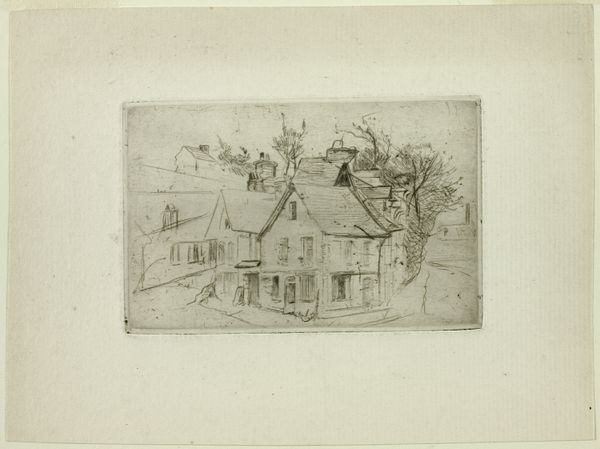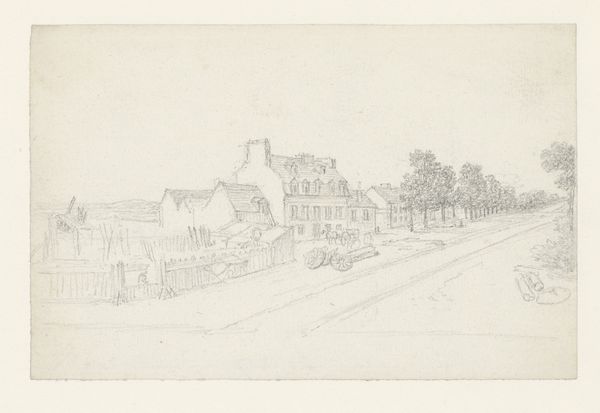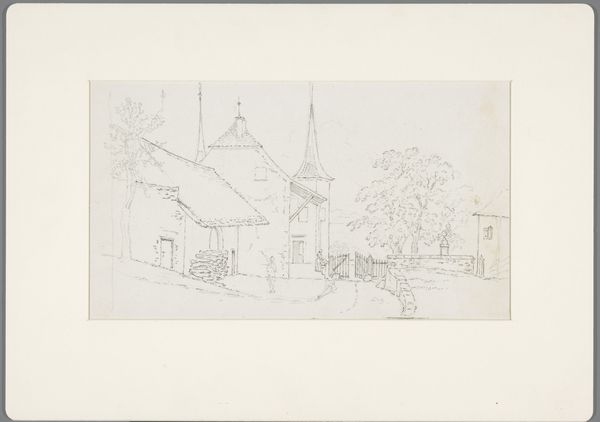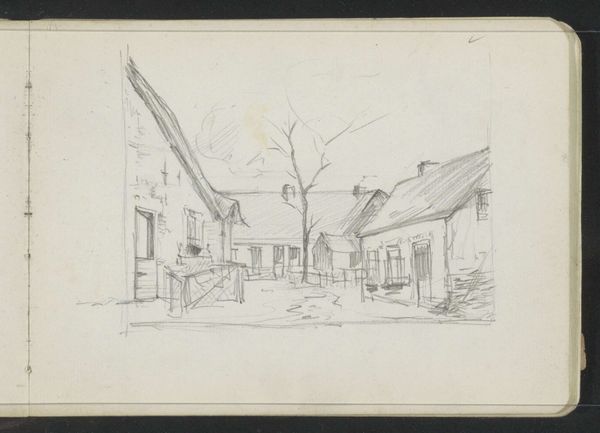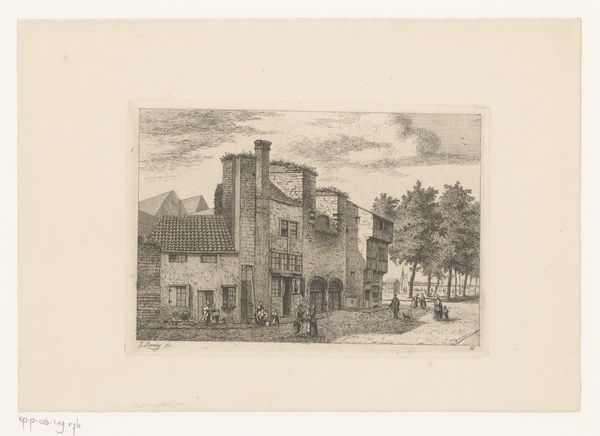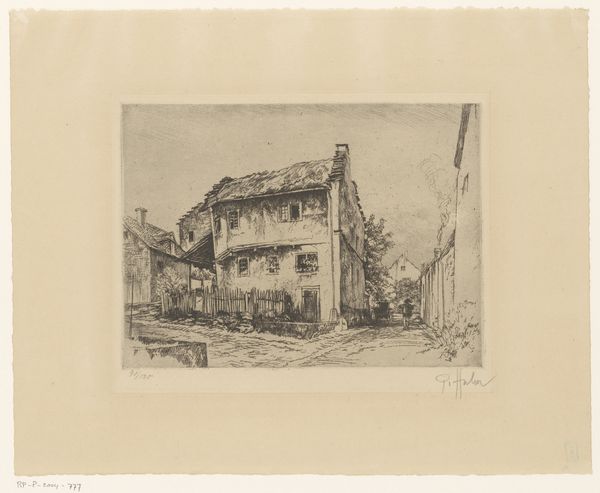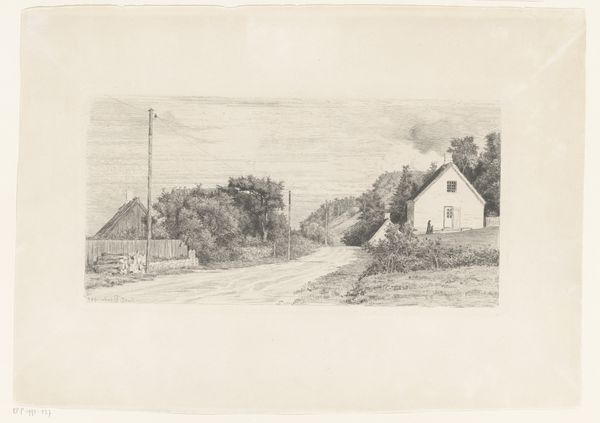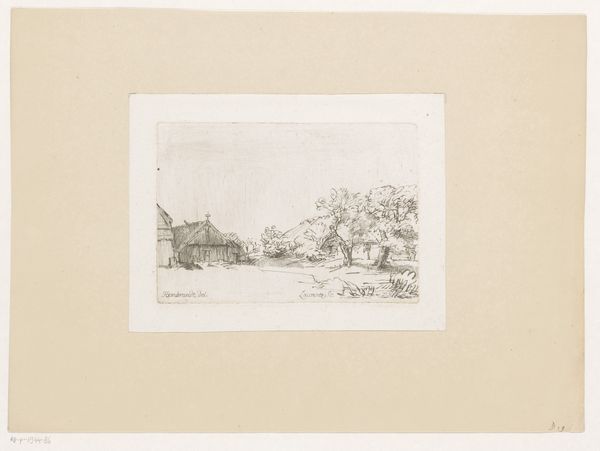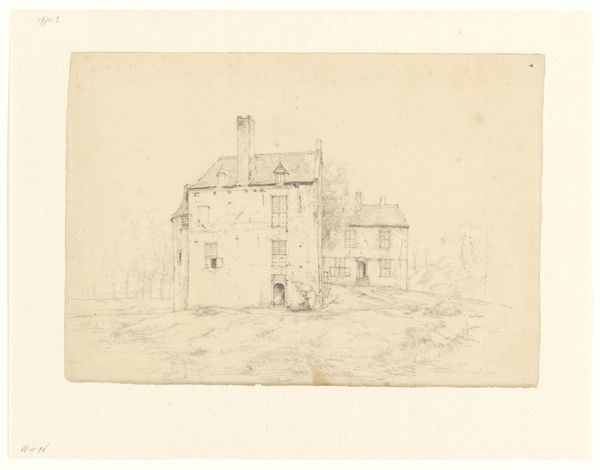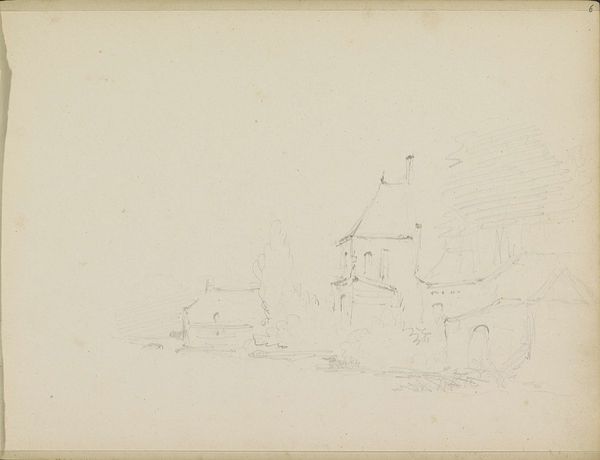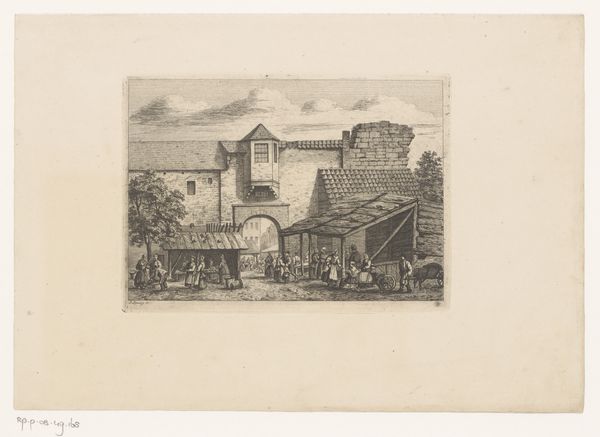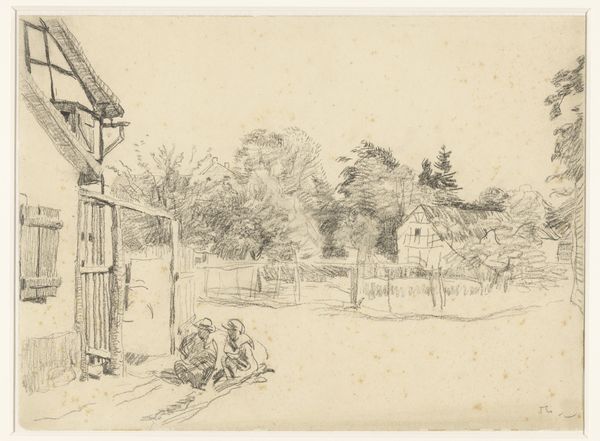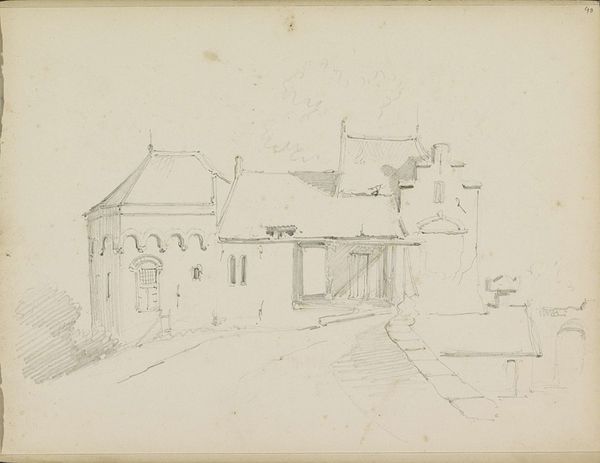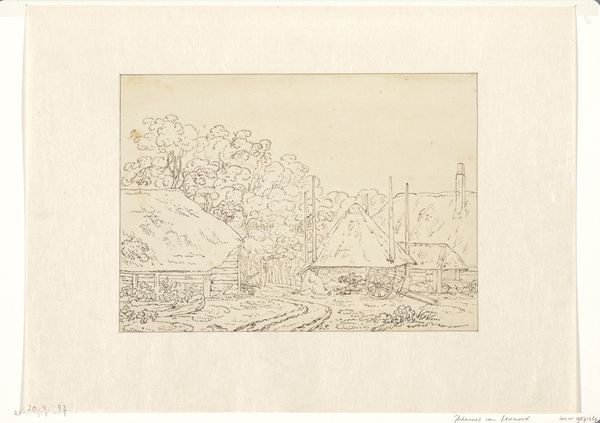
Landhuis in de buurt van het Lac Léman, met op de voorgrond enige figuren 1750 - 1809
0:00
0:00
Dimensions: height 167 mm, width 300 mm
Copyright: Rijks Museum: Open Domain
Curator: This ethereal sketch presents "Landhuis in de buurt van het Lac Léman, met op de voorgrond enige figuren" by David Alphonse de Sandoz-Rollin, crafted between 1750 and 1809 using graphite on paper. It whispers of a tranquil landscape, doesn't it? Editor: Yes, it almost vanishes before your eyes. It is remarkably ephemeral in its making. Look at how little graphite there actually is—it's more the paper asserting itself, refusing to be anything other than what it is! Curator: That delicate touch seems deliberate. It evokes a sense of Romanticism, where nature and the human presence are observed with both admiration and a hint of melancholic detachment. Editor: I see that, but it seems odd to ascribe that sensibility with so little labor expended on it. Graphite wasn't industrialized then. The quality would've been different, perhaps even harder to work with than the modern variety. Was it ease, or a commentary on fleetingness that led de Sandoz-Rollin to work so... sparely? Curator: Perhaps both? The bare minimum to capture an emotion or fleeting scene? The clothing of the figures hints at their class too. Could it be commentary? Is he inviting us to think on a socio-political reality that remains invisible until it's drawn? Editor: Precisely! It invites such speculation because we cannot see the whole picture. He is almost underlining his place as the leisurely observer with such economical material means, setting down the labor necessary. We're left to grapple with those inherent class imbalances as much as the skill used to make the piece. Curator: And that, I suppose, is what makes it so captivating. This delicate drawing pushes us to look beyond the immediate serenity and question what it represents about the artist, the subject, and the world they inhabited. Editor: Yes. For all its seeming lightness, it's dense with unacknowledged labor and unspoken politics.
Comments
No comments
Be the first to comment and join the conversation on the ultimate creative platform.
